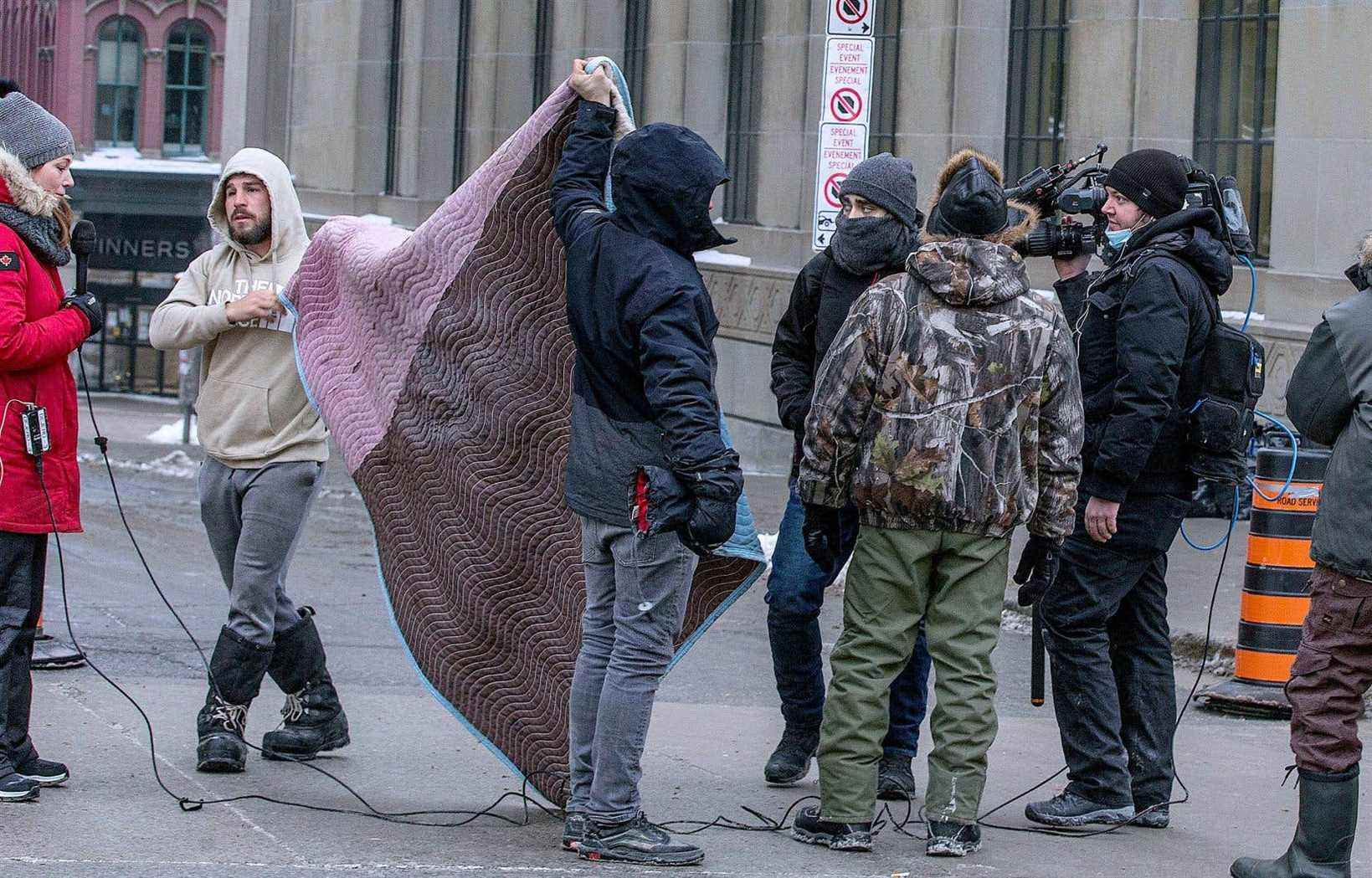Insults, threats, intimidation: several media workers have been attacked by demonstrators during their coverage of the “Freedom Convoy” in Ottawa in recent days. A situation strongly denounced by the journalistic community, witness to a growing animosity towards the profession since the start of the pandemic.
“What I find deplorable is that I had to interrupt my work because of them. They demonstrate for freedom, but only theirs, not that of others, ”laments Philippe Bonneville on the phone.
While he was live on the airwaves of 98.5 FM on Saturday afternoon, the journalist was disturbed by several demonstrators. “They were four or five around me, less than 30 cm from my face. They were shouting all kinds of obscenities at me. It caught the attention of about twenty other people, and it quickly became untenable, I had to interrupt everything, ”he says.
What I find deplorable is that I had to interrupt my work because of them. They demonstrate for freedom, but only their own, not that of others.
Once his microphone was turned off, the protesters quickly dispersed. “They just wanted to disrupt my work”, continues the journalist, noting the whole paradox of the situation: “we come to say that the media do not talk about the movement enough, and when we go to talk about it, we are prevented from doing so. “.
If he recognizes that only a minority of demonstrators verbally attacked the journalists present, Philippe Bonneville maintains that it is “the most hostile crowd to the media” that he has seen in his entire career.
He also considers himself “lucky” to work for radio, a medium that allows him to simply move around with his microphone and remain discreet compared to his colleagues on television.
Several journalists for Radio-Canada, TVA Nouvelles, CTV or even Noovo Info have indeed reported – on the air and on social networks – having been the target of demonstrators in recent days.
Two approaches, two results
The journalist for TVA Nouvelles Kariane Bourassa indicated on the air Friday evening that she had heard nearly thirty insults to her place after only two hours on the ground. The next day, it was the turn of his colleagues Félix Séguin and Raymond Filion to be interrupted live by participants visibly angry at their presence. Live, we see one of them attacking a security guard hired by the private network to accompany the journalists on the spot.
The scenario repeated itself on Tuesday when journalist Yves Poirier took over with his cameraman Olivier Ménard. In a video shared on the networks – counting nearly 455,000 views – we see them struggling to continue their live broadcast as protesters follow them, shouting and giving the middle fingers to the camera, while security guards try to repel them.
For her part, Audrey Ruel-Manseau – who covered the event for the Noovo Info channel – anticipated the slippages and did everything to remain as discreet as possible. “It was almost impossible to know that I was there for a media, she underlines. I was alone with my cell phone, no cameraman. No acronym of my media on my clothes or on my microphone. Result: apart from a few insults when she asked for interviews, she managed to do her job without being interrupted. She nevertheless finds it “deplorable” to have to come to this to practice her profession in peace.
The political class also denounced the situation on Wednesday. The House of Commons — at the initiative of the Bloc Québécois — deplored the “attempts to intimidate” media workers have suffered in recent days in Ottawa and recalled “the primordial and essential role of journalists in a democracy”. .
Necessary precautions
This is not the first time that information workers have been attacked in this way. People interviewed by The duty agree, however: animosity towards the media has been felt even more since the start of the pandemic.
“The pandemic has been a springboard for people’s disinhibition, notes Mickaël Nguyen, president of the Professional Federation of Journalists of Quebec. At first, attacks on journalists were mostly online. Now, we see in the demonstrations that some express in truth what they wrote, hidden behind their screen, without even realizing that it is criminal. »
Citing an Ipsos poll conducted this fall on behalf of a dozen media organizations in Canada, he recalls that more than 70% of information professionals said they had been victims of harassment in the past year. While cyberbullying is by far the most common form, physical attacks are increasingly common.
Faced with this observation, media companies are taking more and more precautions to ensure the safety of their employees in the field. The duty, for example, two years ago procured protective equipment — helmet, ballistic goggles, gas mask, protective jacket. “Depending on the level of risk, there are cases where we force our journalists, photographers, videographers to wear them. Other times, we ask them to have it handy if things get tough, ”says the director of information, Florent Daudens.
In addition to protective equipment, the major television networks, such as TVA Nouvelles and Radio-Canada, have recourse to security guards, as has been the case in Ottawa in recent days.
“It’s not recent. It’s been years [qu’on en engage], this was already the case at Printemps érable in 2012, explains Luce Julien, director general of information for French Services at Radio-Canada. It’s part of our coverage budget. […] Journalists have also been trained for years to work in hostile zones: war zones, floods, fires, demonstrations. »
The utility has also hired a “safety specialist” for several years to assess the risks faced by employees before being sent into the field.
“It’s disturbing, it’s disturbing. Journalists are there to inform, to bear witness to what is happening. Unfortunately, we are in a tense social climate, in an area of polarization where they are taken as targets, ”drops Luce Julien. “It’s a threat to freedom of the press, an attack on democracy. »
